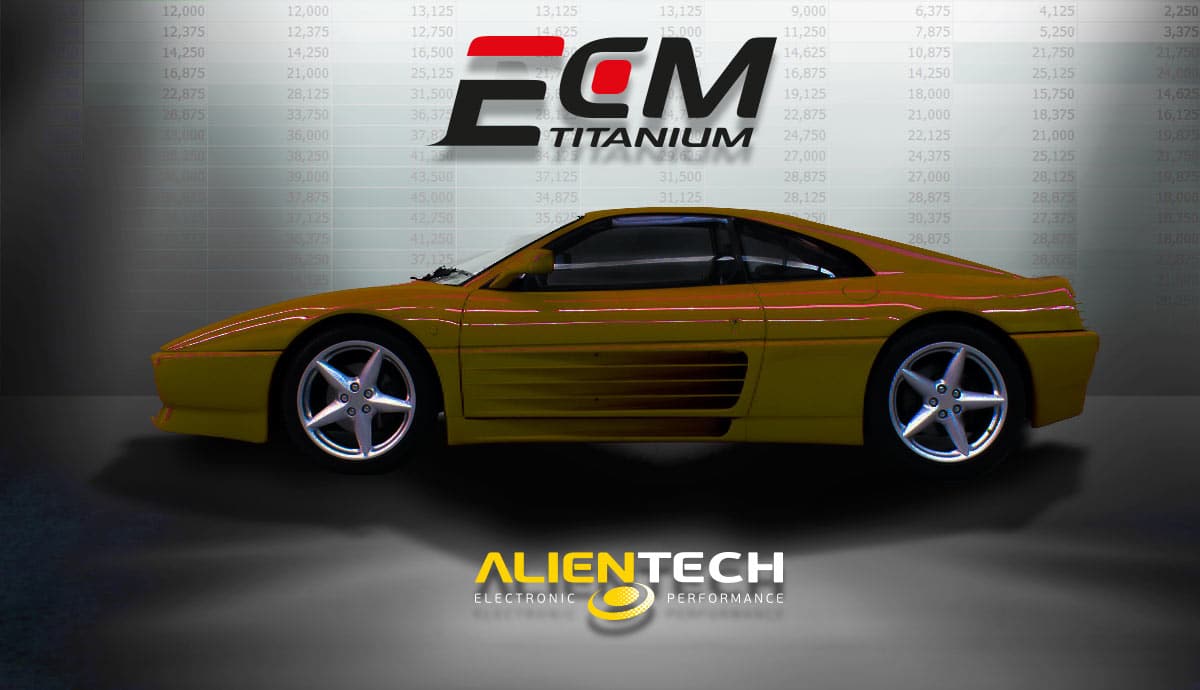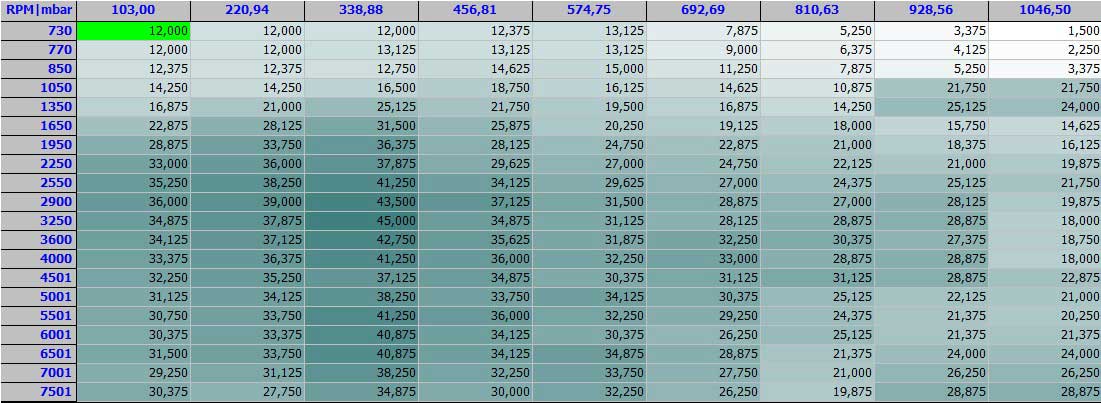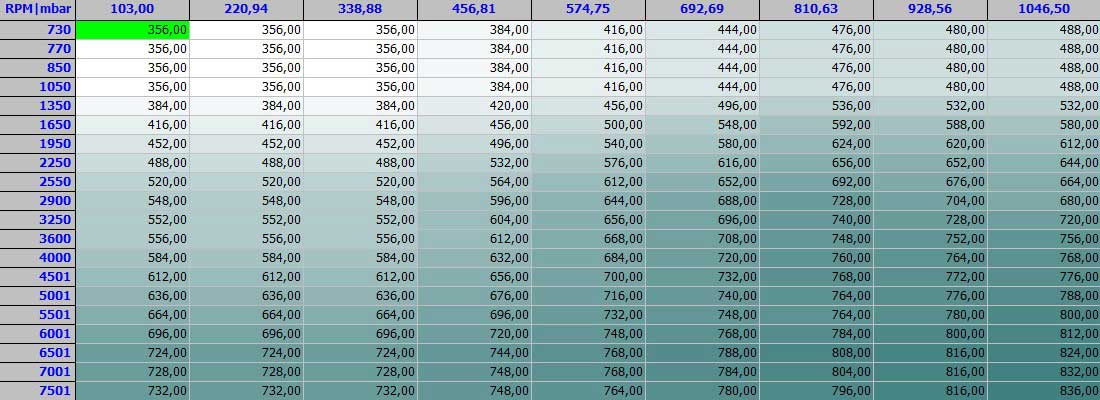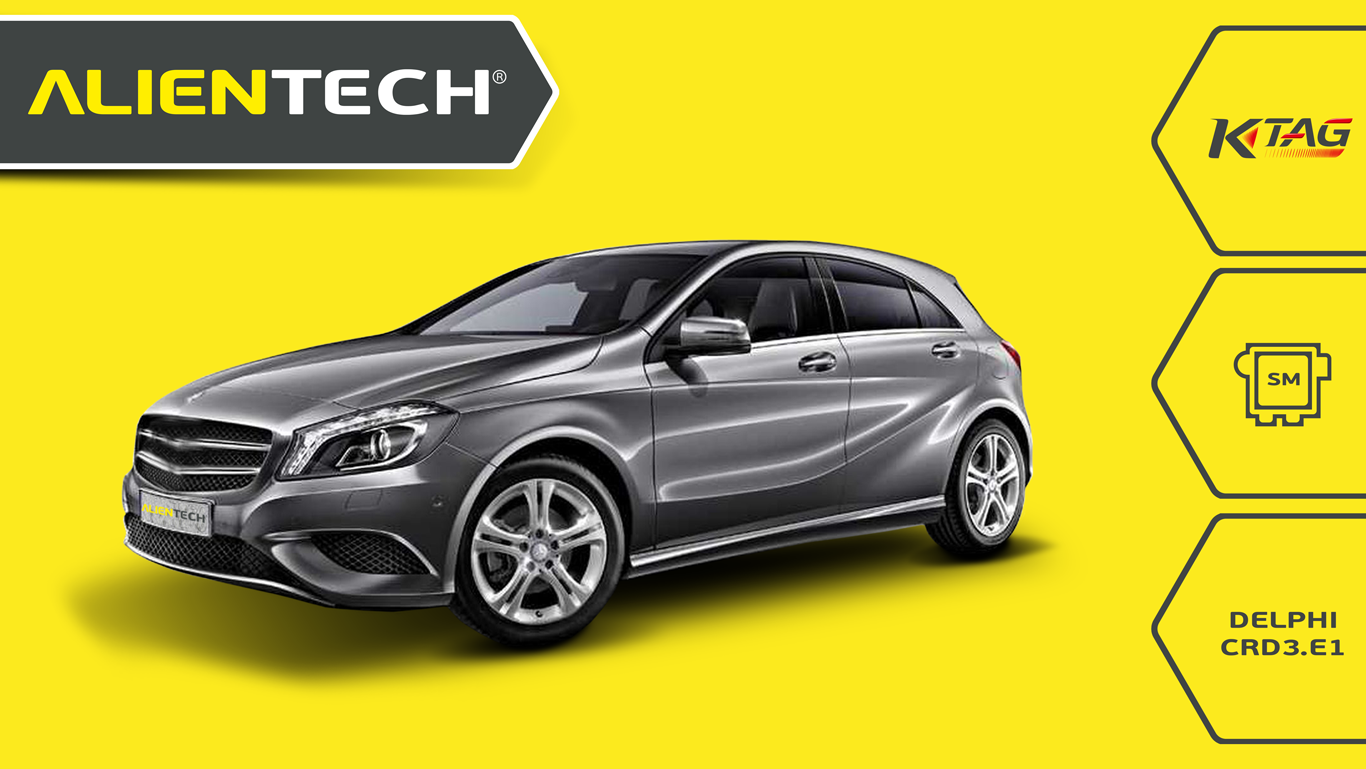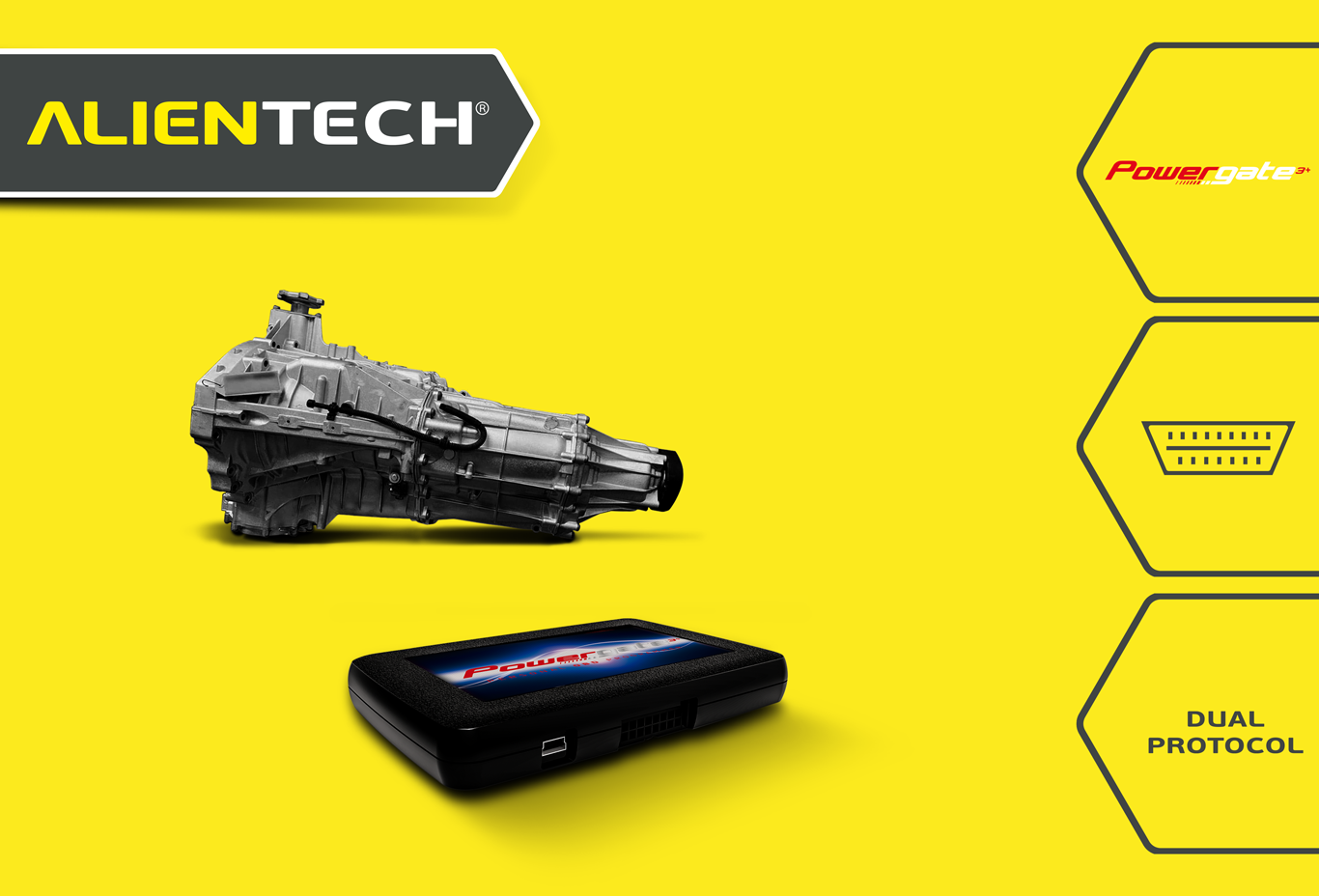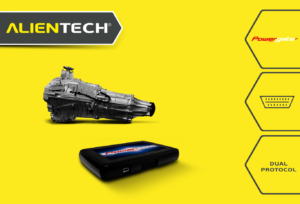Today, our Driver Development Team will introduce you a series of driver updates concerning not-so-recent gasoline cars, which are still much widespread and very interesting on the chiptuning point of view.
We decided to consider the oldest drivers and update them with new maps and correct conversion formulae, thus providing tuners with the capability to carry out the best possible chiptuning.
Here is a short list of the concerned vehicles and the ECUs mounted on-board:
- Alfa Romeo 155 2000 16V Turbo Q4 190PS Marelli IAW 4W6.P8
- Alfa Romeo 156 1600 16V Twin-Spark 120PS Bosch M1.5.5
- Audi A4 (B5) 1800 20V Turbo 150PS Bosch M3.2
- Bmw 3 Series E36 325i 2500 24V 192PS Bosch M3.1
- Ferrari 348 3400 V8 320PS Bosch M2.7
- Fiat Coupé 2000 16V Turbo 190PS Marelli IAW 4WF.P8
- Fiat Punto GT 1400 Turbo 136PS Bosch M2.7/Latch
- Ford Sierra Cosworth 2000 16V Turbo 220PS 4X4 Marelli IAW 045.01
- Ford Sierra Cosworth 2000 16V 204PS Marelli IAW 048.01
- Lada Niva 1700 8V 80PS Bosch MP7.0
- Opel Astra G 1400 16V Ecotec 90PS Delco Multec
- Opel Tigra 1400 16V 85PS Delco Multec
- Renault 21 2000 Turbo 162PS Siemens Bendix
- Renault Clio II RS 2000 16V 172PS Siemens Sirius 32
- Renault Clio II RS 2000 16V 172PS Siemens Sirius 34
- Renault Megane Coach 2000 16V 147PS Siemens Fenix 5
- Saab 93 2000 Turbo 150PS Trionic T5
- Volkswagen Corrado G60 1800 160PS Bosch Digifant
- Volkswagen Golf III 2800 VR6 174PS Bosch M2.9
- Volvo S70 2000 Turbo 180PS Bosch M4.3
Let’s now take some of them into consideration by examining the maps found inside their drivers.
Alfa Romeo 155 2000 Turbo 16V Q4 190PS Marelli IAW 4W6.P8
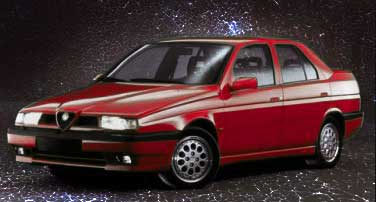
Manufactured since 1992, the Q4 version features an all-wheel drive, a 2000 turbo engine with 16-valve twin-shaft timing and a cast-iron crankcase deriving directly from Lancia Delta Integrale. The all-wheel drive is permanent, characterized by a front open differential, central viscous coupling and rear Torsen self-locking differential. This engine supplies 190PS at 6000rpm and 297Nm at 2900rpm. It allows an acceleration from 0 to 100km/h in 7 seconds and reaches a maximum speed of 225km/h.
The ECU is a Magneti Marelli IAW 4W6 model with an Eprom 27C256 that can be read with an Eprom reader.
These are the main maps found on the recently-updated driver:
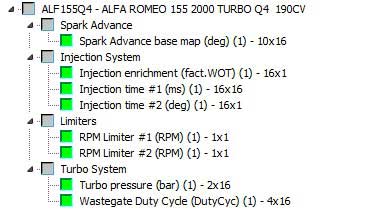
Spark Advance base map
This map represents the engine advance used in a normal vehicle’s functioning state, according to the engine RPM and the load/pressure value expressed in bars; the map is expressed in degrees.
Injection enrichment
It controls fuel injection enrichment by WOT (wide open throttle). It is expressed in factor WOT.
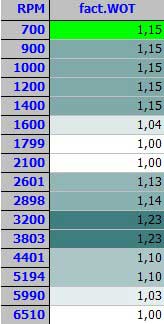
Injection time
This map controls the injectors opening times and, therefore, the quantity of fuel injected. It is expressed in milliseconds (ms) and works like the Spark Advance map according to the engine RPM and the load/pressure expressed in bars.
Wastegate duty cycle
It manages turbo pressure, which is obtained through the opening/closing of the Pierburg (wastegate) valve. It depends on the engine RPM and the TPS degrees.
RPM Limiter
There are two RPM Limiter maps: the highest map describes the revolutions at which the injection cuts off and a second map (lower) indicating when the injection doesn’t cut off any longer.
Bmw 3 Series E36 325i 2500 24V 192PS Bosch M3.1
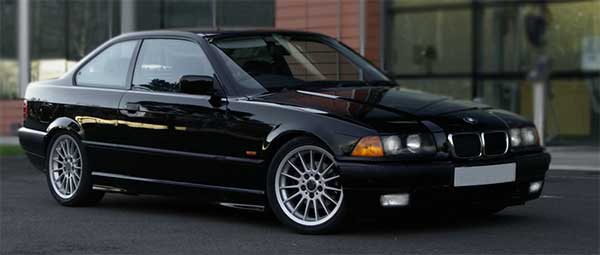
This car was manufactured from 1990 to 2000; the 325i was the top-ranking version, fitted with a 2494 cm³ M50 twin-shaft engine with a maximum power of 192PS at 5900rpm and a torque of 245Nm at 4200rpm.
The 325i versions are fitted with two different types of engine:
- M50B25 without variable valve timing
- M50B25TU with VANOS variable valve timing
Our driver relates to the M50B25TU version fitted with Vanos. The ECU is a Bosch M3.1 with an Eprom 27C512 that can be read with an Eprom reader.
Here are the new maps:
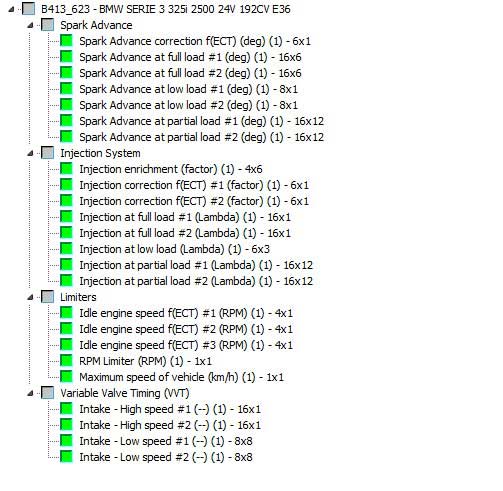
Spark Advance at full load
This map represents the engine advance when full-load conditions (max acceleration) occur, according to the engine RPM and load. The map is expressed in degrees.
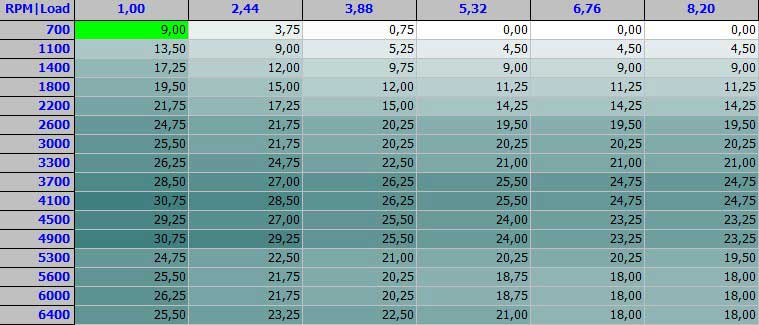
Injection correction f(ECT)
It expresses the advance correction in degrees according to the engine coolant temperature.
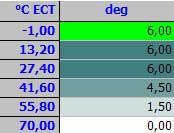
Injection at partial load
Expressed in Lambda, according to load and engine rpm, it represents the injection at partial load. As you can see on the table, when load and rpm increase, the Lambda value decreases, hence the mix will be greasier.
RPM Limiter and Speed
Then we have the map relating to RPM limiters and maximum reachable speed.


Lada Niva 1700 8V 80PS Bosch MP7.0

Produced since 1977, it has undergone some restyling and only a small modernization process over the years. The Niva project was very innovative for its time because it came to combine the features typical of the current Sports Utility Vehicles category (though its body is a traditional off-road one), and the permanent all-wheel drive obtained with a central differential with features typical of pure offroaders (low range gears, rigid rear axle, manual and total block of the third differential, remarkable wheel angles, very short wheelbase), added to the absolute peculiarity of the independence of the gearbox-differential lock system, so as to allow the use of low range gears even without blocking the differential and vice versa, thus ensuring the maximum directionality possible. Today, this solution can be boasted by very few off-road vehicles (Land Rover, Toyota Land Cruiser and Mercedes-Benz G-Class).
Still today the Niva is chosen in over 150 countries not only for its outstanding robustness and simple design: everything is still strictly manual, to the advantage of reliability and ease of maintenance and repair, while there are no electronic interferences, for maximum driving pleasure; but it is also chosen for its versatility of use: a true off-road featuring, however, the body of a utility car and a clearly superior interior space compared to its closest competitors.
Currently, the historical brand ‘Niva’ has been sold to Chevrolet (GM Group), while the classic Niva model is today still manufactured under the name of Lada 4×4 for northern European markets, while in the rest of Europe the car has kept its name Niva.
The engine is a 1700 8V supplying 80PS at 5400rpm and 131Nm of torque at 3200rpm. The control unit is a Bosch MP7.0 with Eprom 28F200 that can be read with an Eprom reader.
Here are the new maps of the updated driver:
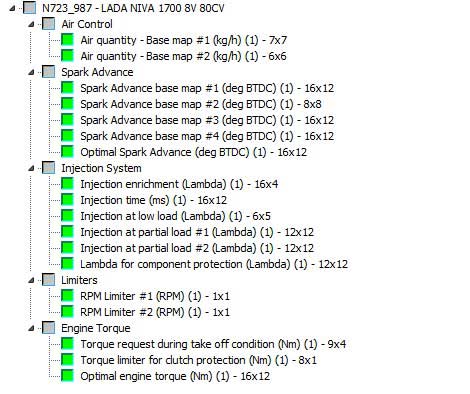
Optimal spark advance
This map represents the engine advance limit, or the maximum advance values that a specific engine can reach to prevent any damage; it is expressed in degrees before TDC and at low revs and high load values this map may present some negative values meaning delays.
Injection at partial load
Expressed in Lambda, according to injectors opening times in ms and engine revolutions, it represents the injection at partial load.
Optimal engine torque
This map represents the optimum torque that should be reached by the engine according to injectors opening times in ms and engine revolutions.
Renault Clio II RS 2000 16V 172PS Siemens Sirius 32
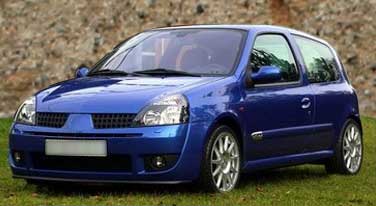
It was manufactured from 1998 to 2012 and its sportier version, the RS, was equipped with a 16V 2000 engine (F4R engine code) capable of delivering 172PS at 6250rpm and 200Nm of torque at 5400rpm.
This variant of the F4R engine is the only F4R unit to remain anchored to the dictates of the previous “Source” engines, since it is the only F4R engine equipped with a cast iron base. In fact, it is an evolution of the F7R engine. The latter was revised in terms of manifolds, both intake and exhaust, cylinder head and distribution, with new timing parameters. Such valve timing was already variable on the intake side thanks to the new phase variator. In addition, the valves are made of a new alloy, more resistant to higher stresses and spark plugs are equipped with a platinum electrode.
The ECU mounted is a Siemens Sirius 32 that you can read with KESSv2 protocol 34 and KTAG protocol 336. There is an Eprom 29F200 that can be read with an Eprom reader.
Let’s now have a look on the maps of the new driver
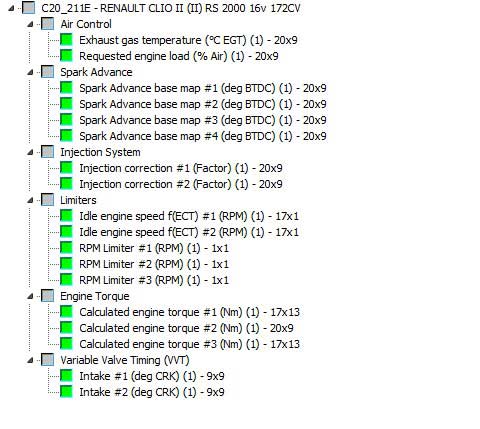
Spark Advance base map
In this case too, one of the most important maps is the advance base map. This map represents the engine advance used in a normal vehicle’s functioning state, according to the engine RPM and the load/pressure value expressed in bars; the unit of measure of the map is expressed in BTDC degrees. As you can notice, the mbar axis fully reaches the atmospheric pressure because the car is not a turbo one.
Exhaust gas temperature
It expresses the temperature of exhaust gases allowed according to RPM and pressure.
Idle engine RPM
Then you will find the minimum RPM according to the engine coolant temperature.
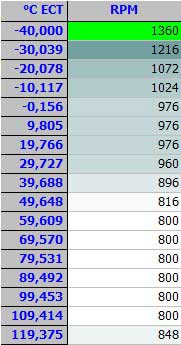
Intake
There are also the variable spark timing maps depending on the engine RPM and pressure in mbar.

